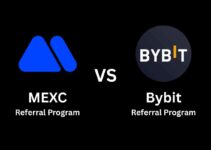Since the DeFi market boomed in 2020, as of now, the total market capitalization of the DeFi market i close to $100 billion, with over $40 billion in locked funds, over $2.8 billion in daily trading volume of decentralized transactions, and over $10 billion in total decentralized lending. So what exactly is decentralized finance?

What is DeFi
Decentralized Finance (“DeFi”) is a financial ecosystem based on smart contracts and built on top of a blockchain network.
The problem that DeFi is trying to solve is disintermediation, eliminating rent-seeking middlemen, and improving the current financial system with low barriers and high efficiency.
For instance, in cross-border payment in traditional finance, when a person needs to send money to someone in another country, he or she usually needs to find a regulated financial institution. The account registration and customer review need to be processed, and the third-party institution will charge a fee, while it takes several working days to complete the remittance.
In DeFi, users only need to send assets from their wallet account to the recipient, and no third-party institution is required. Transactions can usually be completed within one hour and are not subject to regular working hours.

Pros of DeFi
Compared to the traditional centralized finance, DeFi has the following main advantages:
Disintermediation
Intermediaries and arbitrators can be skipped directly, and the code can provide solutions to various potential disputes that may arise. Users can have full control of their funds through their private keys, which reduces the cost of using the product and gives rise to a more harmonious financial system.
Low barriers to entry
Anyone can access and enjoy DeFi financial services, and no access threshold will be set based on identity income, enabling coverage of more groups that do not have access to financial services in the real world. For those with limited access, DeFi can essentially help to bank the unbanked.
Open Source
All protocols are open source and anyone can build new financial products and services on top of them, which is one of the main factors why this field has grown so rapidly.
Use cases for DeFi
Just as there are many different decentralized applications, there are also many different decentralized financial applications, which include decentralized exchange, lending, payments, wealth management, insurance, asset finance, and other segments.
Payment: As with Bitcoin, all smart contract platforms can send money around the world as easily and quickly as sending an email.
Decentralized Exchange: DEX is a decentralized exchange where users can self-manage their funds via private keys, without registration verification, and can easily and quickly exchange any tokens they need.
Decentralized Lending: Anyone who can provide collateral can complete a loan directly without disclosing information to a third party. Borrowers obtain loans and pay interest by pledging their crypto assets, and lenders earn interest by depositing the assets on the platform.
Stablecoin: These are cryptocurrencies whose value can remain pegged to some specific asset, and most of them are anchored to a common currency like the U.S. dollar. For many financial products and general consumption, it is difficult to withstand the greater volatility of cryptocurrencies. The emergence of stablecoin has solved this problem, as well as the gradual growth of the stablecoin market, which provides strong support for Decentralised Finance.
Decentralized Insurance: Decentralized insurance aims to make insurance cheaper, with faster and more transparent payments, and as automation increases, insurance becomes more affordable.
Mainstream DeFi Application
Uniswap: a decentralized trading protocol built on ETH, which can easily and quickly complete exchange transactions between ETH and all ERC20 tokens. Its pioneering adoption of the AMM automatic market maker model has helped DEXes successfully reach the mass market.

MakerDAO: a decentralized autonomous organization running on ETH, with a dual token model where MKR is the governance token and DAI is the stable coin. Users can pledge ETH to the protocol to get DAI, which is anchored 1:1 with USD, so it is also known as the “central bank” on ETH.

Aave: a decentralized lending system that allows users to borrow, lend and earn interest on various crypto assets without the need for an intermediary.

Closing thoughts
DeFi aims to solve the problem of unequal finance and create a fairer and more open financial system. Although it has accomplished parabolic growth in the past two years, it is still in the early stage with a small user market and is more used in the field of speculative arbitrage, which is still far from achieving the goal of helping more groups enjoy financial services.
However, we also believe that the trend of decentralization will continue. With more resources coming on board and more innovation, DeFi will eventually make its way onto the mainstream stage.
Disclaimer: Trading crypto involves significant risk and can result in the loss of your invested capital. The materials are not related to the provision of advice regarding investment, tax, legal, financial, accounting, consulting, or any other related services and are not recommendations to buy, sell, or hold any asset. MEXC Learn solely provides information, but not financial advice. You should ensure that you fully understand the risk involved before investing.
Join MEXC and Start Trading Today!



